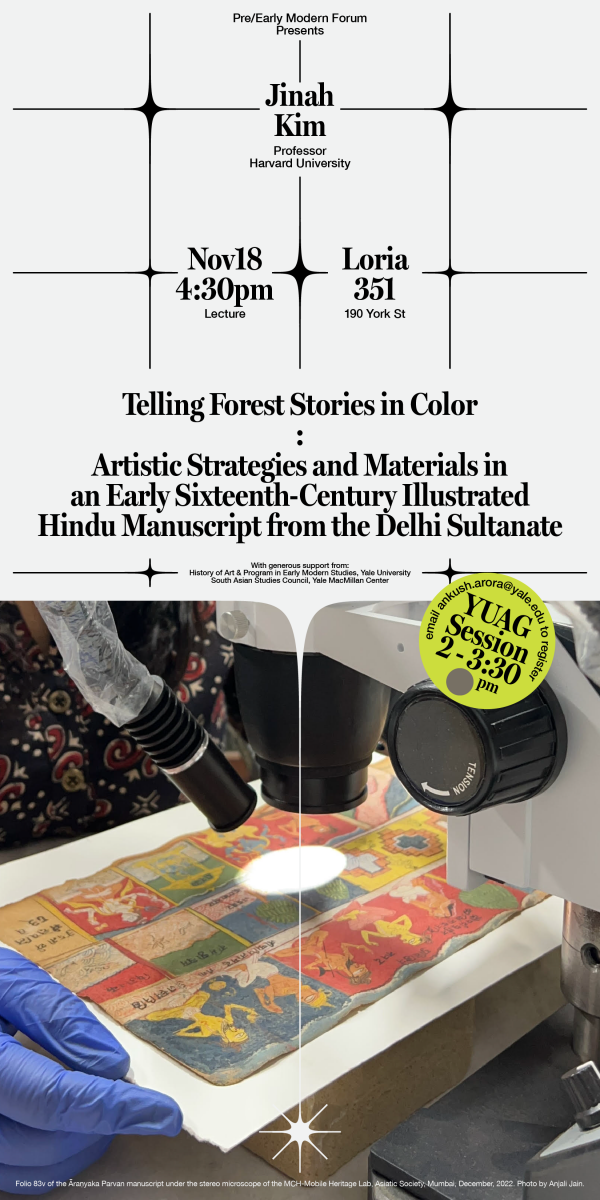Yale Pre/Early Modern Forum: Jinah Kim (Harvard), “Telling Forest Stories in Color: Artistic Strategies and Materials in an Early Sixteenth-Century Illustrated Hindu Manuscript from the Delhi Sultanate”
Yale Pre/Early Modern Forum
presents
Telling Forest Stories in Color: Artistic Strategies and Materials in an Early Sixteenth-Century Illustrated Hindu Manuscript from the Delhi Sultanate
Lecture by Jinah Kim, Professor, Harvard University
Monday, November 18, 2024, 4:30 pm, Loria 351, 190 York Street, New Haven
Object Session, with Jinah Kim, at Yale University Art Gallery, Nov. 18, 2:00-3:30 pm
For registration, send a request to ankush.arora@yale.edu
With generous support from:
History of Art and Program in Early Modern Studies, Yale University
South Asian Studies Council at Yale MacMillan Center
The earliest surviving illustrated manuscript of the Hindu epic Mahābhārata known to us is a manuscript now in the Asiatic Society, Mumbai (966-B.D.245). Completed in July 1516 CE during the reign of Sikander Lodi of the Delhi Sultanate, this exceptional manuscript presents the third book of the Mahābhārata, the Book of the Forest (Āraṇyaka Parva) with dynamic and colorful illustrations. Although known to art historians working on Indian painting following the publication of a short monograph on the manuscript in 1974, the manuscript remained unseen in the library’s reserve collection for safekeeping and conservation concerns. In a historic collaboration under the aegis of the Mapping Color in History [MCH]-India, this manuscript along with five other art historically important manuscripts were examined by the MCH-India mobile heritage lab in 2022-2023, which provided thorough documentation of each manuscript’s physical conditions and non-invasive analysis of pigments. Based on the findings from the MCH-India on-site analytical campaign, this talk will situate the manuscript’s importance in the history of the Indic art of the book: its inventive layout and synergistic text-image relationship depart from the template for designing Indic religious manuscripts while the narrative setting of the book, i.e. Paṇḍavas adventures in forests, seems to have inspired the manuscript makers to cultivate fresh pictorial language and colors to channel changing ecological awareness.
Jinah Kim is the George P. Bickford Professor of Indian and South Asian Art in the Department of History of Art & Architecture, Harvard University.
